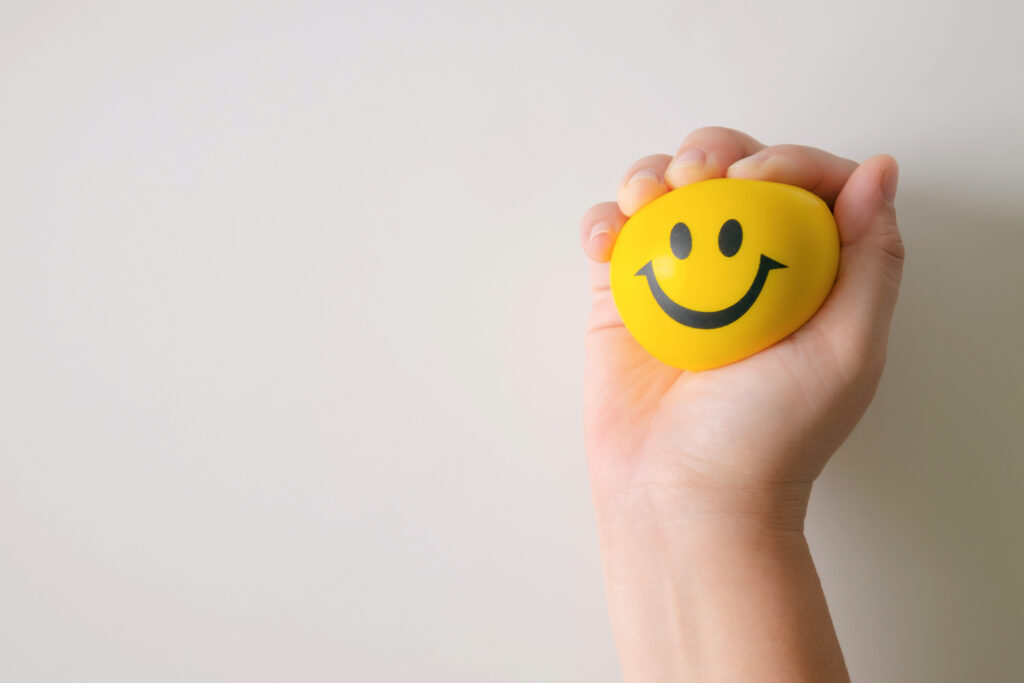Coping with workplace stress: It’s not all yoga and bean bags…
This blog is more than a year old
For those of us now working from home, our workplaces will have changed significantly and we will be facing a range of new pressures, writes Neil Hope-Collins.

There are frameworks we can use to think about how work and other factors affect our mental health during this difficult time. Using frameworks can help us think through what might help in looking after our mental health, and what our employers or clients should do to support that.
What is stress and what affects our ability to cope?
Let’s start with a definition of stress: “The adverse reaction people have to excessive pressures or other types of demand placed on them.”
To me, this suggests a balance between the pressures we all experience and our individual ability to cope with them, without having an adverse reaction.
The pressures we all experience come from home, from work; some are imposed by other things, some we place on ourselves. Pressures also change with time and our circumstances.
Our ability to cope is also multi-faceted and depends on our skills, previous experience and the support we have in place. We often call this our resilience – and it can change from day to day depending on our circumstances.
The factors determining our ability to cope can be broken down into the following areas:
- Demands – how big are the demands on us and how complex are they?
- Control – how much do others control what is happening in our lives?
- Role – do we understand what is expected of us, and by whom?
- Relationships – which relationships support us, and which increase the pressure on us?
- Change – we all accept that things change. It’s how they change that matters.
- Support – who gives us support and how?
- Fairness – do we feel that we are being treated fairly in the circumstances?
- Resilience – our individual skills and experiences mean we all respond differently.
The stress see-saw
I like to think in pictures, so to me putting this all together looks like this, with the pressures on the left of the seesaw, and our ability to cope on the right:

The idea is to try to keep the seesaw balanced, with the arrow pointing to the green area. We need to be looking for ways to maintain and build all those elements on the right hand side of the seesaw.
Therefore it is reasonable to look at things that increase our resilience, gaining more skills that help us cope with the pressures.
We know that the biggest single factor in any a person’s health, both mental and physical, is social interaction and social support.
Addressing the pressures we face
The boxes on the right show us how we can stay balanced, for example by increasing our support and resilience. However, we also need to look at those boxes on the left – we need to address the pressures we face, not just our ability to cope.
Who controls what goes into each box? Who controls how heavy it is?
We have some control over the things in the home box, but not everything. Nevertheless, it is always worth looking at things here we may be able to change to reduce pressure.
That big workplace box, though, belongs to our employer and those who contract us – and they have the biggest influence over what goes in there.
It is Prospect’s job to get employers and clients for freelancers to take responsibility for that box – and for the pressures they put on our members.
What’s so different about the workplace?
What can your client or employer actually control?
The demands put on you. First, the quantity of work they expect – can it be done in the time they have allowed you? Then the quality of the work – do you have the skills and experience to do the work? Or is it simply not challenging at all? Neither extreme is good.
How much control do they give you over how and when you do the work?
Have they been clear about your role? Do you know what is expected of you, of the limits of your task and where responsibility for decisions lies?
What is the culture in the workplace? Are there clear expectations of relationships, of people’s behaviour?
Why should my employer or client focus on my resilience?
To quote a respected colleague: “Employers: if all your workers need resilience training then the problem isn’t with the workers.”
We can compare approaches to workplace safety and mental health to see why.

To put it simply, it’s down to employers’ and clients’ attitude to risk – their risk. The risks they create. Prospect only asks that employers and clients understand the risks they create and manage those risks in the same way they do with any other risks.
Neil Hope-Collins is vice-president of Prospect and an inspector for the Health and Safety Executive.